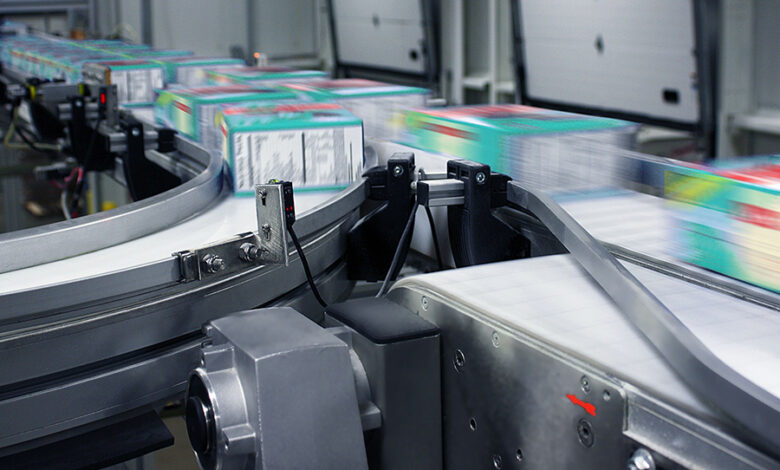
When planning a manufacturing or distribution facility, efficient material handling is crucial for productivity and profitability. A rotating conveyor system can be a game-changer in streamlining operations, but it’s essential to understand the key design considerations. What are the key design considerations for a rotating conveyor system?
The key design considerations for a rotating conveyor system include load capacity, rotational speed, system size, material compatibility, safety features, and integration with existing processes. These factors ensure optimal performance and longevity of the system.
While this brief answer covers the main points, it’s essential to delve deeper into each consideration to truly understand how they impact the design and functionality of a rotating conveyor system. By exploring these factors in more detail, you’ll be better equipped to make informed decisions when implementing or upgrading your material handling systems.

Load Capacity And Rotational Speed
When designing a rotating conveyor system, load capacity and rotational speed are two of the most critical factors to consider. These elements are closely interrelated, and finding the right balance is crucial for optimal performance.
Load capacity refers to the maximum weight the conveyor can safely handle at any given time. It is determined by factors such as the strength of the conveyor belt, the power of the motor, and the structural integrity of the entire system. Accurately estimating the weight of the materials you’ll be transporting is essential to ensure the system can handle the load without risk of failure or excessive wear.
Rotational speed, on the other hand, affects how quickly materials can be moved through the system. While faster speeds may seem desirable for increased productivity, they can also lead to issues such as material spillage, increased wear on components, and potential safety hazards. The ideal rotational speed will depend on the nature of the materials being transported, the layout of your facility, and the specific requirements of your production process.
Choosing The Right Conveyor Surface
Another crucial design consideration for rotating conveyor systems is material compatibility. The conveyor’s surface must be suitable for the types of materials it will be transporting to ensure efficient and safe operation.
Different materials require different conveyor surfaces. For example, if you’re handling small, delicate items, a smooth belt surface might be ideal to prevent damage. On the other hand, a more durable and textured surface might be necessary for heavier or more abrasive materials to provide better grip and resist wear.
Additionally, factors such as temperature resistance, chemical compatibility, and cleanability should be considered when selecting the conveyor surface. For instance, the conveyor material must be food-grade and easy to sanitize in food processing applications. In chemical processing plants, the surface must resist corrosion and chemical reactions.
Protecting Workers And Products
Incorporating appropriate safety features is paramount to protecting workers and transporting products when designing a rotating conveyor system. This design aspect is crucial for preventing accidents and ensuring compliance with workplace safety regulations.
One essential safety feature is emergency stop mechanisms. These should be easily accessible and marked, allowing workers to halt the system quickly in an emergency. Guard rails and protective enclosures are also important, particularly around pinch points or areas with a risk of entanglement.
Consider implementing anti-rollback devices for systems that involve height changes to prevent materials from sliding backward. Additionally, sensors and alarms can be integrated to detect issues such as overloading, belt misalignment, or unexpected obstructions. Regular maintenance checks and operator training programs should also be factored into the overall safety strategy of your rotating conveyor system.
Integration With Existing Processes
When implementing a rotating conveyor system, it’s crucial to consider how it will integrate with your existing processes. A well-designed system should enhance your overall workflow, not disrupt it.
Start by mapping out your current production or distribution process. Identify the points where the rotating conveyor will interact with other equipment or manual operations. Consider factors such as the speed of upstream and downstream processes to ensure the conveyor system can keep pace without creating bottlenecks or idle time.
It’s also important to consider your facility’s physical layout. The rotating conveyor should fit seamlessly into the available space without obstructing other operations or creating safety hazards. This might involve custom designs or modular systems that can be adapted to your specific needs.
Additionally, consider the control systems and how they will interface with your existing equipment. Modern rotating conveyors often come with advanced control options that can be integrated with your facility’s overall automation system. This integration can provide valuable data for monitoring performance, scheduling maintenance, and optimizing overall efficiency.
Designing For Future Needs
While addressing current operational requirements is essential, it’s equally important to design your rotating conveyor system with an eye toward future needs. A well-designed system should be able to adapt to changes in your production or distribution processes.
One aspect of this is scalability. Consider whether your production volumes are likely to increase and design a system that can handle higher capacities without requiring a complete overhaul. This might involve choosing motors and components that can handle increased loads or designing the system in modular sections that can be easily expanded.
Another key consideration is flexibility in terms of the types of materials handled. Your product line may evolve, so a conveyor system that can accommodate different sizes, shapes, or weights of materials can be a valuable asset. This might involve adjustable guide rails, interchangeable belt surfaces, or variable speed controls.
Lastly, consider the potential for technological advancements. The field of material handling is constantly evolving, with innovations in areas such as IoT integration, predictive maintenance, and energy efficiency. Designing your rotating conveyor system with the ability to incorporate these technologies in the future can help ensure its long-term value and performance.
Achieving Extraordinary Results
Now that you understand the key design considerations for a rotating conveyor system, it’s time to put this knowledge into action. The next step is to thoroughly assess your current operations, focusing on material flow, production volumes, and future growth projections. This evaluation will provide valuable insights that will guide you in designing or selecting a rotating conveyor system that perfectly aligns with your specific needs and long-term goals.



